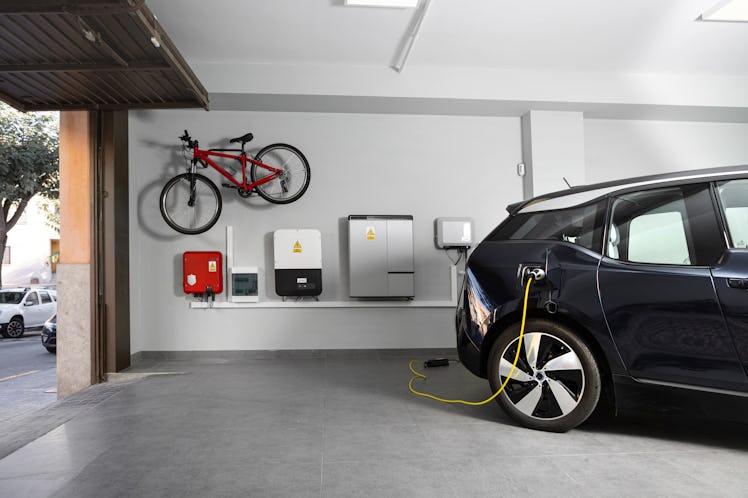These 11 Cars Now Qualify For The $7,500 Federal EV Tax Credit
Plus, a handful of EVs that qualify for partial credit — and the cars that no longer qualify at all.

On April 18, 2023, the revamped Inflation Reduction Act-era EV tax credit went into effect, and with it, major changes to which electric vehicles (EVs) now qualify for federal tax credits. The tax incentive — which gives car buyers a tax refund if they buy electric — is still in place to encourage Americans to buy an EV, but these newly overhauled rules aim to reduce the country’s dependency on foreign-sourced materials needed for EV batteries, offering more perks for materials sourced in the U.S. That also means far fewer vehicles qualify for the tax credit than did before the new rules went into effect.
The EV tax credits, which are a part of the Inflation Reduction Act (IRA), offer a tax credit of up to $7,500 for the purchase of a new electric vehicle. Previously, 21 vehicles qualified for the tax credit. However, the number is much lower with the new rules that went into effect today.
For an EV to now qualify for the tax credit, automakers need to meet two major requirements: a battery component requirement and a critical mineral requirement. The battery component rule mandates that a certain percentage of the value of the battery components must be manufactured or assembled in North America.
The critical mineral requirement is also tied to the batteries that power EVs. The mandate requires a certain percentage of the value of the critical minerals that power the EV batteries to be sourced in the United States or a country with an active free-trade agreement. An EV that meets both of these requirements will be eligible for a $7,500 tax credit, while a vehicle that only meets one of the two will receive partial credit.
With the new mandates now in effect, the number of EVs that qualify drops from 21 to 11 EVs with full credit and 7 with partial credit, according to fueleconomy.gov.
Vehicles that qualify for the full $7,500 in tax credits include:
- Cadillac Lyriq
- Chevrolet Blazer
- Chevrolet Bolt
- Chevrolet Bolt and EUV
- Chevrolet Equinox
- Chevrolet Silverado
- Chrysler Pacifica PHEV
- Ford F-150 Lightning
- Lincoln Aviator Grand Touring
- Tesla Model 3 Performance
- Tesla Model Y (All-Wheel Drive, Long Range All-Wheel Drive, and 2022 Performance)
Vehicles that qualify for the partial tax credit include:
- Ford Escape Plug-in Hybrid
- Ford E-Transit
- Ford Mustang Mach-E
- Jeep Grand Cherokee PHEV 4xe
- Jeep Wrangler PHEV 4xe
- Lincoln Corsair Grand Touring
- Tesla Model 3 Standard Range Rear Wheel Drive
Vehicles that no longer qualify for the tax credit include:
- BMW 330e
- Nissan Leaf models — including the S, S Plus, SL Plus, SV, and SV Plus
- Volvo S60 models — including the Extended Range and T8 Recharge
- Audi Q5 TFSI e Quattro
- BMW X5
- Chrysler Pacifica
- Ford Escape Plug-In
- Lincoln Aviator Grand Touring
- Rivian R1S
- Rivian R1T
- Volkswagen ID.4 models — including the Pro, Pro S, S, AWD Pro, and AWD Pro S
For full details on which vehicles quality or don’t qualify for the tax credit, visit fueleconomy.gov.